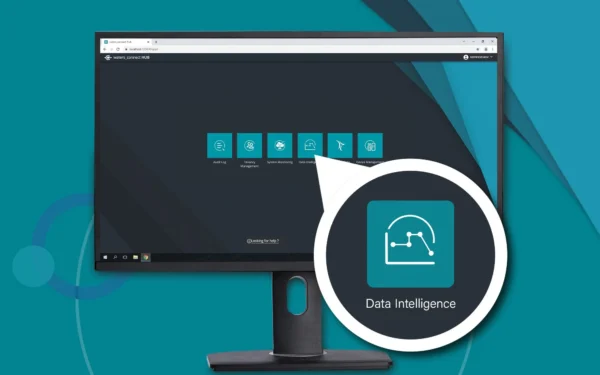Introduction To Quality Assurance Programs
Developing a Quality Assurance (QA) program for Electronic Lab Notebooks (ELN) and Laboratory Information Management Systems (LIMS) may seem like a complex and costly endeavor. However, with clearly defined objectives, the active participation of our stakeholders, and a systematic approach, we can establish a high-quality system that adheres to quality standards, streamline the quality assurance process, provides feedback on the quality control program, and enhances data integrity and compliance. This collaborative effort will not only boost customer satisfaction but also demonstrate our stakeholders’ commitment to quality.
In the pharmaceutical industry, having a QA team is crucial for several reasons. The main purpose of the QA team members is to guarantee the safety and efficacy of the manufactured drug products, which directly impact the health and well-being of patients. Companies risk process lapses without a QA implemented throughout their ELN and LIMS that could lead to contaminated or ineffective products. Quality assurance plans ensure that every production stage, from raw material sourcing to final packaging, adheres to strict regulatory standards and internal protocols. This oversight protects patients and shields companies from costly recalls, regulatory fines for noncompliance, and damage to their reputations. By emphasizing the importance of a quality assurance program, organizations can demonstrate a higher level of commitment to excellence and their responsibility toward customer experience and meeting customer expectations.
Formulating a Quality Management System
In order to kickstart the journey of creating a top-notch QA program, the first step is to define the program’s objectives clearly. Are you a start-up or clinical-based? Answering these types of questions will help determine the type and size of the program needed. Clearly outlining specific goals, such as improving data accuracy, ensuring regulatory compliance, and enhancing operational efficiency, provides a clear roadmap for success. It’s also crucial for managers to engage with stakeholders from various areas, including scientists, IT personnel, and regulatory experts, to ensure that the identified objectives are practical and aligned with the laboratory’s needs. This collaboration can take place within a specific work group within the organization or a new Quality group may be created.
Following this, a structured framework is essential to manage and monitor the quality management system systematically. This involves developing comprehensive policies and procedures that govern using ELN and LIMS, outlining data entry, management, and review processes, and establishing measurable performance metrics, KPIs, and scorecards. Proactively assessing risks and formulating contingency plans enable effective risk mitigation. At this point, the group would also identify which regulations may impact the implementation of ELN and LIMS systems.
Regulations
In the world of pharmaceuticals, the FDA and EMA have laid down strict regulations to ensure that products are of the highest quality, completely safe, and effective. The FDA’s Part 11 regulations, for instance, focus on maintaining the integrity of electronic records and signatures, emphasizing the importance of data reliability and system validation. It’s also important to note that compliance with Part 11 requires system validation, proper system use, and maintenance practices. Meanwhile, the EMA’s Good Manufacturing Practice (GMP) standards stress the need for comprehensive documentation, system validation, and rigorous risk management to guarantee top-notch product quality and patient safety. QA departments play a crucial role in ensuring that electronic systems used in manufacturing and quality control are secure, validated, and capable of maintaining accurate records. Both agencies require regular internal audits and inspections to ensure compliance, making it essential for QA processes to be continuously monitored and updated to meet these regulatory demands.
Selecting LIMS and/or ELN With QA Software
Selecting the right ELN and LIMS system is crucial for the smooth operation of any laboratory. A thorough approach to system selection involves defining the specific requirements of the laboratory and conducting comprehensive vendor evaluations. Post-system selection and validation of these systems help ensure they perfectly align with the lab’s needs. The QA department typically selects a team of stakeholders responsible for different parts of the selection and validation process.
Data integrity and security are essential elements of a robust ELN and LIMS system. The Quality department’s culture plays a significant role in creating strong data governance policies critical for effective data ownership, validation, and access controls. These controls are usually set by the regulatory body, with which the Quality department collaborates for future approvals. Robust audit trails, data encryption, and regular backups are crucial for maintaining transparency, accountability, and information safeguards.
Compliance with regulatory standards, such as FDA Part 11 and ISO standards, is non-negotiable and is directed by the Quality department in system selection. Adhering to these requirements and configuring systems accordingly is paramount and is usually incorporated into validation master plans and documents for use during evaluations. Comprehensive documentation of all quality assurance activities is crucial for regulatory deliverables, audits, and inspections, while regular internal audits ensure preparedness for external reviews. The QA department typically sets these audit schedules and forms teams to inspect all aspects of the systems and provide reports regularly.
Quality Improvement
Quality assurance requires regular training programs to ensure compliance, continuous monitoring, and improvement. Regular evaluations of the programs overseen by the quality group and their effectiveness are essential to identify areas needing enhancement or updates. Implementing a change management process facilitates the optimal handling of system updates, ensuring thorough testing and validation before each new system deployment. The quality department plays a crucial role in fostering a culture of continuous improvement, promoting innovation, and adopting best practices, contributing to long-term regulatory compliance and success.
In addition to these fundamental steps, certain best practices can significantly enhance the quality assurance program. Encouraging cross-functional collaboration leverages diverse expertise from different departments while designing systems with end-users in mind, which promotes user-friendliness and reduces errors. Scalability and future integration with other laboratory systems, real-time performance monitoring, and maintaining strong vendor relationships further fortify the program and allow these systems to grow alongside the organization.
Conclusion
Embarking on a quality assurance program for ELN and LIMS systems in the pharmaceutical industry is an exciting journey to start. By defining quality requirements and clear objectives, establishing a structured framework, and ensuring data integrity and security, we’re paving the way for enhanced reliability, accuracy, and efficiency in laboratory operations. This sets the stage for delivering top-notch pharmaceutical products and services, all while maintaining compliance and embracing continuous improvement and best practices. Prepare for an exciting ride toward excellence by enabling your QA process and lifecycle within your LIMS and ELN today.





